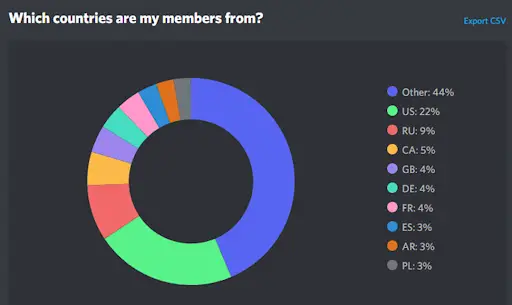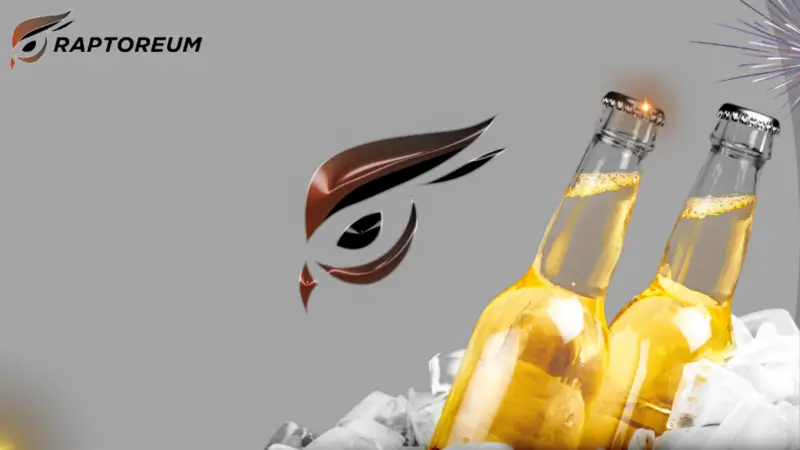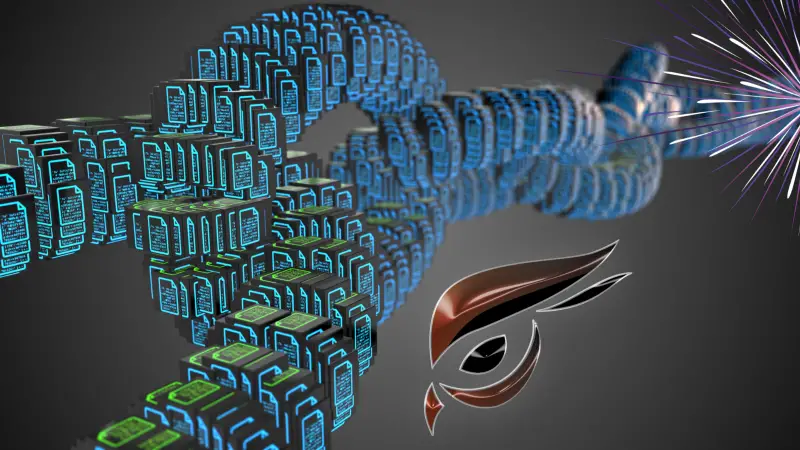Raptoreum Co-Founder David Morris on the Resilient Ecosystem That Allows Everyone To Participate
🔥Crypto Fireside #23 — Interviews with crypto people.

🔥Crypto Fireside #23 — Interviews with crypto people.
🔥Hello! Who are you, and what do you do?
DM: Hi there, I’m David Morris, Cofounder of the Raptoreum Project an up and coming blockchain ecosystem focusing on security and resilience. I am also an educator and avid cryptohead having been engaged in the space since the pre Bitcoin days.
Raptoreum is different from most other blockchain projects in that we are not aiming to be the fastest, easiest to work with or even the cheapest and most scalable solution, as all these aspects come with serious issues that negatively impact long term usability and scaling. We are taking more of an “It has to work!” approach towards building out our asset and smart contract platform.
Issues from other projects fully validate this approach towards participating in the space.
With Raptoreum, we have a team of 42 onboard, including volunteers, 10 developers and key decision-makers. We all have different functions, mine mainly being coordinating our overall strategy as well as ensuring that we develop the project in a practical and accessible manner.
I felt humbled to no end when we broke through the eight thousand user mark on our community Discord server a while back and had a look at our membership distribution, which beyond any doubt proves that our focus on accessibility is working well.

🔥What’s your backstory, and how did Raptoreum come about?
DM: I started down the crypto and cypher/cyber-punk rabbit hole in the early-mid 90s on a couple of BBS (bulletin board systems) where I got heavily into the discussion of Gibson’s, Bethke’s and to some extent Dick and McLuhan's books and how they would impact this new thing called the Internet.
Coming from that and a family background in publishing and driving combines after school, after a brief foray into applied mathematics, I ended up using my skills in developing self-access learning systems particularly ones with P2P aspects in China of all places. This led to torrents which in turn led to cryptography and the Heinlein server on Freenode and #Bitcoin.
I got very heavily into early BTC GPU mining and things spiralled from there to developing an initial non-Chinese customer base for BtcChina and expanding it with cross-currency arbitrage bots. 2014 put a rather drastic end to that with the collapse of MtGox causing me to take a two-year hiatus from crypto along with a divorce.
However being irrevocably addicted to tech and making PCs faster, I got back into mining in 2016 and built a few faucets, mainly for getting my students interested in crypto. Then in 2018 after joining Discord for the first time, I met a group of like-minded people on the periphery of the RavenCoin project and got involved with them in some discussions that ended up as the Raptoreum project.
We just clicked, all of us have unique but very complementary skill sets that make us incredibly strong as a team. After finding several holes in other projects we were looking at to possibly integrate we ended up with a clear direction that has just clicked.

🔥Describe the process of launching Raptoreum.
DM: 2020 was a horrendous stress test for the project as a whole, but we came out of it with three babies (three actual babies), messed up work contracts due to Covid, code fix let downs, finally, at the end of the year we conducted an initial Dash based testnet which we rode into the February launch of our mainnet.
The launch was an interesting process with the community really stepping up helping stop exploitative listings on dubious exchanges (logins and SSL data open to 3rd parties). Community backing was wild at this point with us having to start smartnode rewards ahead of schedule from people buying up RTM in astounding amounts.
A major takeaway from that, if doing it over again I mean, reserve two weeks of developer fees for the project immediately following launch. We spent the first two months paying out testnet bounties and compensating for two days of missing node rewards out of the developer fees, which slowed down getting additional developers and better listings, but it has worked out well despite that.

🔥Take us through your daily process of what it is that you do.
DM: My day usually starts around mid-late afternoon. With the team being as dispersed as we are I have to adapt rather than the other way around. I catch up on the various things that have come in during the night.
No two days are the same and it frequently feels like herding cats in chaos central. I can end up doing anything from moderating socials to helping facilitate a legal review to helping architect new features.
The one thing I do to stay grounded through something like that is when working from home or the office I finish off the day by taking the kids to the beach around dawn. The Zen from that makes it all manageable.
🔥What has worked to attract and retain users to your ecosystem?
DM: What has worked well for us as a project has been our unique proof of work. The GhostRider algorithm and CPU mining have kept the doors wide open to a multitude of participants even today we are well past the fifty-five thousand miner mark according to miningpoolstats.stream.
This kind of continual growth has helped us diversify and disperse in a meaningful manner. Almost anyone has up till now been able to mine profitably, even with old hardware in low to medium power priced regions of the world and still on newer AMD CPUs in the high priced parts of the world.
🔥You’ve made some key technology decisions such as using Apache Spark, Smart Nodes and your inclusive mining algorithm Ghostrider. Tell us more.
DM: We decided on the Ghostrider algorithm, Apache spark and smart-nodes from a sort of a holistic perspective. Essentially it all just fits, we’ve got the algorithm facilitating easy participation in layer 1 POW, we’ve got a proven solid reliable VM solution in Apache Spark, coupled with the safety features that Dash have managed to contribute to blockchain code which is revolutionary in terms of safety security, 51% attack protection and in trustless decision making.
We are working with this combination of proven technologies on top of Dash’s codebase which means we are very close to Bitcoin in terms of the codebase, not Ethereum, not BSC, Polkadot etc. One should note that most of the features being implemented and worked on Ethereum derive from code in the Bitcoin codebase.
Our approach of taking this combination of proven technologies and applying them in a new fashion is essentially what has facilitated our success so far.
We are working towards assets and time-locked transactions on the protocol layer as opposed to a secondary or contract-layer like on Ethereum this will facilitate a much greater amount of flexibility in what and how we are doing things.
Contract transactions for example can very quickly end up as almost its own side, demi or para chain or whatever we end up naming them running on the nodes and notarizing itself on the main chain like how komodo notarizes itself on Bitcoin. Meaning we will have a fully usable flexible system with the resilience of Bitcoin in terms of networking that doesn’t require centralized hardware. For example validator nodes on different networks are open to centralised collapses, with data centres going offline.

🔥How are you doing today, and what does the future look like? Let’s talk numbers!
DM: We are currently in the process of releasing a new testnet with time-locked transactions or “futures” as well as a rebase to the very latest Dash 17 code we may be initially starting the testnet without GUI interface then adding a GUI interface and a basic asset platform but it depends a little bit on how many resources we end up having available on the coding side.
Our continued development has engaged the community to such a high extent that we currently have close to 67% of the circulating supply locked up and collateralizing smart nodes.
The ROI on our smart nodes is going to be significantly different from how it’s structured on projects utilizing a traditional Masternode structure. We have a small percentage of 20% of the block rewards allocated to nodes for basically providing 51% attack protection then we have a second income stream for the nodes which are coming in with asset futures or time-locked transactions and Smart contracts.
This means that the focus will shift significantly compared to more traditional chains where 40 to 50% of block rewards get allocated to master nodes on the network. Here we are working with the concept of usage-based rewards meaning we are not rewarding Masternode holders for sitting passively by doing nothing we are rewarding them for encouraging community usage of the blockchain and the way we like to do it.
Our planned vendor platform should start driving actual non-meta-space usage of Raptoreum AKA real life. It opens up our slightly more unique take on NFTS to usage by smaller businesses for publishing traceability information for their products, quality assurance information or just product narrative. For many artisanal craftsmen, getting their narrative out with the product is half the battle. And being able to do so for a few dollars, publish immutable data on a blockchain linked to a QR or barcode that can be added to their product is providing a valuable service in a decentralized manner.
We currently have between 80 and 90 smaller businesses ranging from a gem mine to a reindeer slaughterhouse and a dairy who are all interested in utilizing our vendor platform and traceability tokenization once we have it available. This is a powerful force for driving further expansion into actual usage which is what we plan to focus on as our primary driver of growth.

🔥Explain time-locked transactions.
DM: let’s say a larger miner wants to hold coins but also has to sell some to cover expenses, he has no interest in those hitting the market at the same time as shared node withdrawals, so he sells them over the counter, but with a timelock on the delivery, the coins show up in the receiving wallet but act like freshly mined coins until the agreed-upon point in time. This should help stabilize prices even further as this is how many of the larger Chinese miners do business.
🔥Through launching Raptoreum, what is something you have learned that surprised you?
DM: Keeping it flexible has been the main lesson learned. We’d planned, we’d maybe even planned too much, however when outlining a project it’s hard not to basically over plan to some extent. We feel that open and honest communication has managed to help us past this.
The initial road map we published was a bit of a mistake, we had essentially locked ourselves down to a specific list of features without leaving sufficient flexibility in what we had published to take into account that we might need to add additional features for it to make sense in the longer term. The spork for variable fees, for time-locked and asset transactions, is an invaluable tool for the long term however it did cause some delays in other parts of the project.
One of the very best decisions we made on the project was to go out and invest in a listing with SouthXchange. They are an older, very technologically advanced centralised exchange and what helped the project go through the early phases of very low liquidity was the fee-free transfer of Bitcoin into SouthXchange via the Lightning Network. This helped provide a great deal of liquidity for the project at a critical juncture and I can’t recommend their services strongly enough.
🔥Mistakes were made. What were they and what did you do?
DM: There have only really been two mistakes so far on the project, the first one I mentioned a little bit earlier was where we ended up paying out developer fees to bounties from the testnet way too quickly. This delayed some of our listings and it delayed the hiring of additional developing manpower. Overall slowing down progress at an early juncture.
It didn’t become apparent to us until we were essentially at the end of the bounty payout phase. Prices had lowered somewhat from the initial fairly euphoric pricing. I guess this overall delayed our delivery by 6 to 8 weeks versus where we are now. It’s a lesson learned but not one we will be repeating under any circumstances.
The other mistake on the project was listing on Safe.Trade. They turned out to have serious issues with respecting customer and team privacy, feeling at liberty to leak data and makeup data at the same time. Later discussions with the Komodo and Pirate team turned up that apparently the owner of that exchange has mental health issues and had we done additional diligence on them we probably would not have listed with them.
However, at the time they seemed like a positive option compared to as I mentioned earlier a couple of rather exploitative places that didn’t enforce same-origin policy on their login pages and had only TLS 1.0 enabled leaving everything done on the sites wide open. Listing with Safe.Trade gave us the option of telling some of these places to get lost. These other exchanges that listed us, one of which was/is operated by Zpool had probably some of the most egregious security holes in them I have ever seen.
This was somewhat of a disappointing experience as they’re rather well-liked by most of their community and the community of several other decent projects. With hindsight being 20/20 we should probably have gone out and privately financed or taken on a bit of venture capital to finance listings on a couple of better exchanges like the ones we ended up listing on in the second round. Then again, we are probably now a stronger project for not having had to take on VC and the loss of control which that may entail.
🔥What have been the most influential things in your life? This can include books, podcasts, or people?
DM: One of the things that have pushed me the hardest has been a really ingrained hatred for anything woke. I’ve read most of the slightly more modern socialist utopian rioters, one of the most influential ones as far as I’m concerned is Ian M Banks and his Culture Universe series. Seeing what goes on in a lot of places and how the supposedly woke narrative is completely counter to what it professes.
I remember seeing the fakeness of the so-called globalist movement when I was one of the first people in crypto working with servers that I had rented from China, paid for with Bitcoin I got from a guy in America and had hired Peruvian and Brazilian coders to work on. If you think about it, following the rule sets brought about by the global elite and Davos it should have been impossible for me as an individual! What bloody business of theirs is it what I do with a few computers?
🔥Do you have any advice for other creators, entrepreneurs, or developers who want to get started or are just beginning?
DM: Work with the team that share your core values. It will simplify every step of the process as you’ll be able to focus on a common goal but still bring your different individual viewpoints to bear on what’s going on. After having survived 2020 and the government ineptitude overreach and overreactions you quickly realize that things aren’t that bad, it can always get worse.
Keeping on despite immense logistical challenges is so rewarding it’s on an almost spiritual level once you’ve gotten through and reached whatever goal you’ve set along the way.
Apart from the core team you’re working with never stop showing appreciation for the good people who buy into your ideas and products and support them. Being grateful, respectful, and humble costs nothing and it gains you so much goodwill, however, that’s not to be confused with always sounding polite, particularly on a project like RTM, sometimes if there is an issue, clear communication across cultural and linguistic barriers is the only option.
Don’t pay any attention or heed to people who feel that communicating bluntly in English is terrible, keep it simple if you need to use the word ‘stupid’ or worse to keep things clear and simple, do it. To hell with a few native English speakers who feel insulted by it. It means that Mandarin, Spanish and Bahasa speakers can understand it with the intent it was delivered!
🔥Where do you see the blockchain, cryptocurrency and the decentralisation space going in the next 5 to 10 years?
DM: The blockchain space is going to divide into three possibly more very distinctive streams. Regulators particularly the governmental kind are going to in some places overreach, this will decouple in some geographical locations the payment side of blockchain and cryptocurrency from the rest of its use cases. The new emerging stream will be blockchain as a service in different forms.
So the two streams where traditional payments are still a very major part of the blockchain or crypto space will be fast-track and slow-track.
Fast-track will be everywhere with easy Fiat access on and off-ramps, no-nonsense, no overreach, no absurd requirements on reporting, the second stream we’ll be the slow cumbersome probably only Bitcoin, Ethereum Litecoin a bit of XRP on very highly regulated exchanges that may do large volumes but not have real-world usage or mass participation.
Blockchain as a service however should be everywhere. Examples of services can be the publication of traceability information or quality assurance information for products to public blockchains this is how our team plans on engaging this sector. Additional examples can be bridging the metaverse to the real world just like we are working on with bit knives and NFTs created from real-world data. Blockchain as a service can also be things like medical records, billing ledgers, the sky is the limit here and this is the space where there truly is unlimited growth potential as no sane regulator is about to interfere with this type of usage.
🔥Where can we go to learn more?
DM: You can find the Raptoreum website here. And links to our socials and more are below.
🔥Thank you, David!
Want to know how you can support Crypto Fireside?
Sign up below. It's free and easy 🔥.

